Morocco, a vibrant North African country, is a land of stunning landscapes, rich history, and diverse cultures. Known for its majestic mountains, sprawling deserts, and bustling markets, Morocco offers an unforgettable experience to every traveler. With its unique blend of Arab, Berber, and French influences, the country is a captivating destination that invites exploration and discovery.
Table of Contents
Geography
Morocco spans approximately 446,550 square kilometers, making it the 40th largest country in the world. It is located in the northwest corner of Africa, bordered by the Atlantic Ocean and the Mediterranean Sea to the west and north, respectively. The country shares land borders with Algeria to the east and southeast and the disputed territory of Western Sahara to the south.
The geography of Morocco is remarkably diverse, featuring mountain ranges, plains, and deserts. The Atlas Mountains traverse the center of the country, while the Rif Mountains run parallel to the northern coast. The Sahara Desert, one of the largest deserts in the world, occupies the southern regions of Morocco, offering breathtaking landscapes of sand dunes and oases.
Morocco’s coastline stretches for about 1,835 kilometers, providing beautiful beaches and a range of water activities. The diverse ecosystems found in Morocco, from coastal regions to mountainous terrains, support a wide variety of flora and fauna, making it a haven for nature enthusiasts and adventure seekers alike.
The climate in Morocco varies significantly between regions. The coastal areas have a Mediterranean climate, characterized by mild, wet winters and hot, dry summers. In contrast, the interior regions experience a more continental climate with greater temperature variations. The mountainous areas can experience snowfall in winter, making them popular destinations for skiing and snowboarding.
States of Morocco
Morocco is divided into 12 regions, which are the primary administrative divisions of the country. These regions can be likened to states in other countries. Here is a table listing the 12 regions of Morocco along with their capitals:
| No. | Region | Capital |
|---|---|---|
| 1 | Béni Mellal-Khénifra | Béni Mellal |
| 2 | Casablanca-Settat | Casablanca |
| 3 | Drâa-Tafilalet | Errachidia |
| 4 | Fès-Meknès | Fès |
| 5 | Guelmim-Oued Noun | Guelmim |
| 6 | Laâyoune-Sakia El Hamra | Laâyoune |
| 7 | Marrakesh-Safi | Marrakesh |
| 8 | Oriental | Oujda |
| 9 | Rabat-Salé-Kénitra | Rabat |
| 10 | Souss-Massa | Agadir |
| 11 | Tanger-Tétouan-Al Hoceïma | Tangier |
| 12 | Dakhla-Oued Ed-Dahab | Dakhla |
History
Morocco has a rich history that dates back to ancient times. The region has been inhabited since prehistoric times and has seen various civilizations, including the Phoenicians, Romans, and indigenous Berber tribes. The Kingdom of Mauretania emerged in the 3rd century BC, which later became part of the Roman Empire.
In the 7th century, Arab armies conquered the region, introducing Islam and shaping the cultural landscape of Morocco. The establishment of various dynasties, such as the Almoravid and Almohad, played a significant role in the development of Moroccan culture and architecture. These dynasties were responsible for constructing many of the stunning mosques and palaces that can still be seen today.
During the 20th century, Morocco became a French and Spanish protectorate, which significantly influenced its political and cultural landscape. The country experienced a nationalist movement that culminated in independence from France on March 2, 1956. King Mohammed V played a crucial role in the struggle for independence and later became a symbol of national unity.
Since gaining independence, Morocco has embraced modernization while preserving its rich cultural heritage. The country has developed a constitutional monarchy, and King Mohammed VI has implemented various economic and social reforms aimed at improving the quality of life for Moroccans. Today, Morocco is known for its stability and progressive approach compared to some of its neighbors in the region.
Top Ten Must-Visit Destinations
1. Marrakech
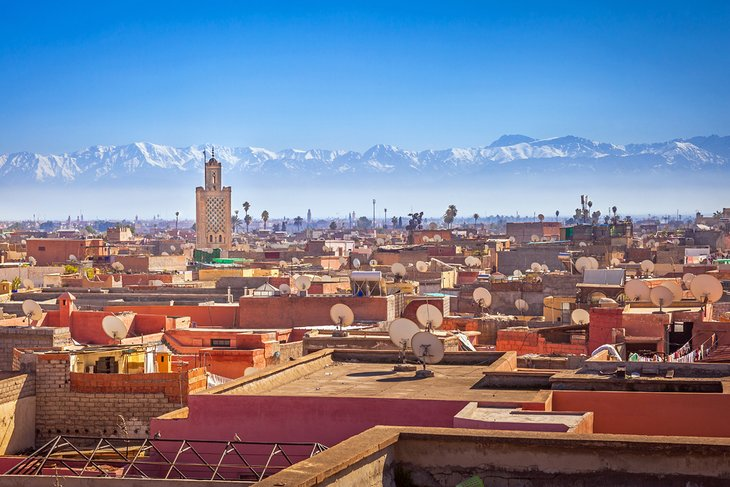
Marrakech, known as the “Red City,” is one of Morocco’s most vibrant and culturally rich cities. The city is famous for its historic medina, bustling souks, and stunning palaces, including the Bahia Palace and El Badi Palace. Visitors can explore the lively Jemaa el-Fnaa square, where street performers, musicians, and food vendors create a vibrant atmosphere.
Marrakech is also home to the breathtaking Majorelle Garden, designed by French painter Jacques Majorelle in the 1920s. The garden features exotic plants, vibrant blue buildings, and a small museum dedicated to Berber culture.
The city’s nightlife is lively, with numerous restaurants and bars offering traditional Moroccan cuisine and live music. From traditional Moroccan dishes to international cuisine, Marrakech caters to a wide range of tastes, making it a culinary paradise for food lovers.
2. Fes

Fes is known as the spiritual and cultural capital of Morocco. The city is home to one of the oldest universities in the world, Al Quaraouiyine, and its medina is a UNESCO World Heritage site. Visitors can wander through narrow alleys, explore ancient mosques, and witness traditional crafts being produced in the bustling workshops.
Fes is particularly famous for its leather tanneries, where traditional methods of tanning are still practiced. The sight of the colorful dye pits is a must-see for visitors. The medina is also filled with intricate architecture, including the stunning Bou Inania Madrasa, showcasing the exquisite artistry of Moroccan craftsmanship.
The city hosts several festivals throughout the year, including the Fes Festival of World Sacred Music, attracting artists and musicians from around the globe. This festival highlights the rich cultural diversity of Morocco and promotes intercultural dialogue through music.
3. Chefchaouen
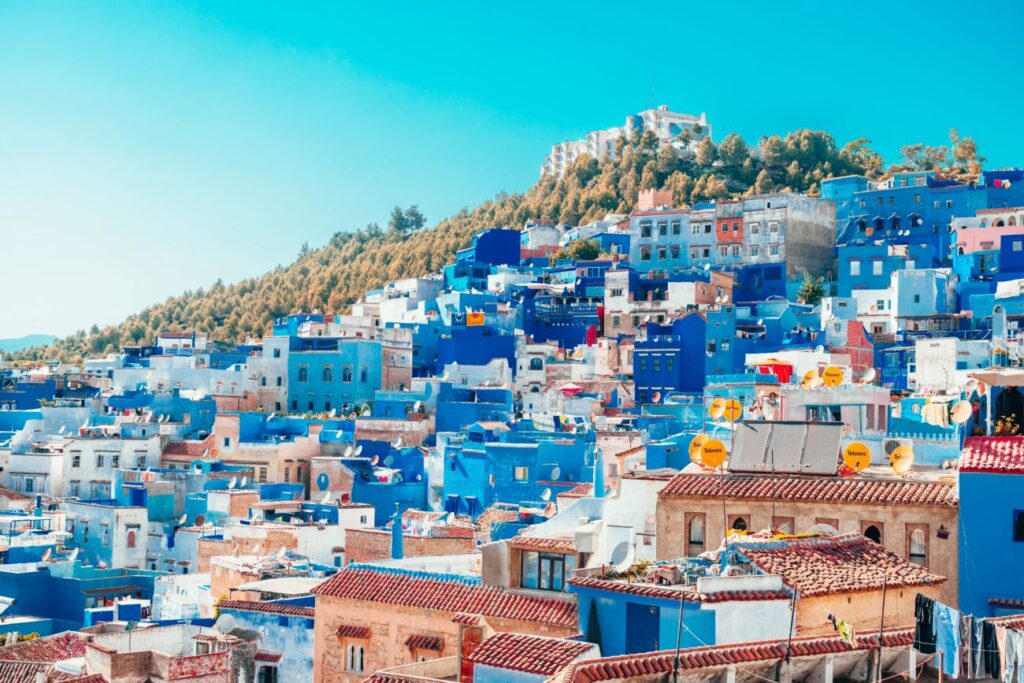
Chefchaouen, often referred to as the “Blue City,” is famous for its picturesque blue-washed buildings and stunning mountain scenery. The city is a popular destination for photography enthusiasts and those looking to relax in a tranquil setting. Visitors can explore the vibrant markets, hike in the nearby Rif Mountains, and enjoy local cuisine.
The city is also known for its artisanal crafts, including handwoven textiles and pottery. The relaxed atmosphere and friendly locals make Chefchaouen an ideal place to unwind and immerse oneself in the local culture.
The Kasbah Museum in Chefchaouen showcases the history and culture of the region, offering insights into the Berber way of life. Visitors can also hike to the nearby God’s Bridge, a natural rock formation that provides breathtaking views of the surrounding landscape.
4. Casablanca

Casablanca is Morocco’s largest city and a major economic hub. The city is known for its modern architecture and vibrant nightlife. A must-visit attraction is the Hassan II Mosque, one of the largest mosques in the world, which boasts stunning ocean views and intricate architectural details.
The Corniche, a seaside promenade, is a popular spot for locals and tourists alike. It offers a variety of cafes and restaurants with stunning views of the Atlantic Ocean. Casablanca is also home to the Royal Palace, although it is not open to the public, the exterior views are impressive.
The city’s arts scene is thriving, with numerous galleries and cultural events showcasing contemporary Moroccan art. The Moroccan Cinema Museum offers insights into the film industry, highlighting the country’s cinematic contributions.
5. Merzouga
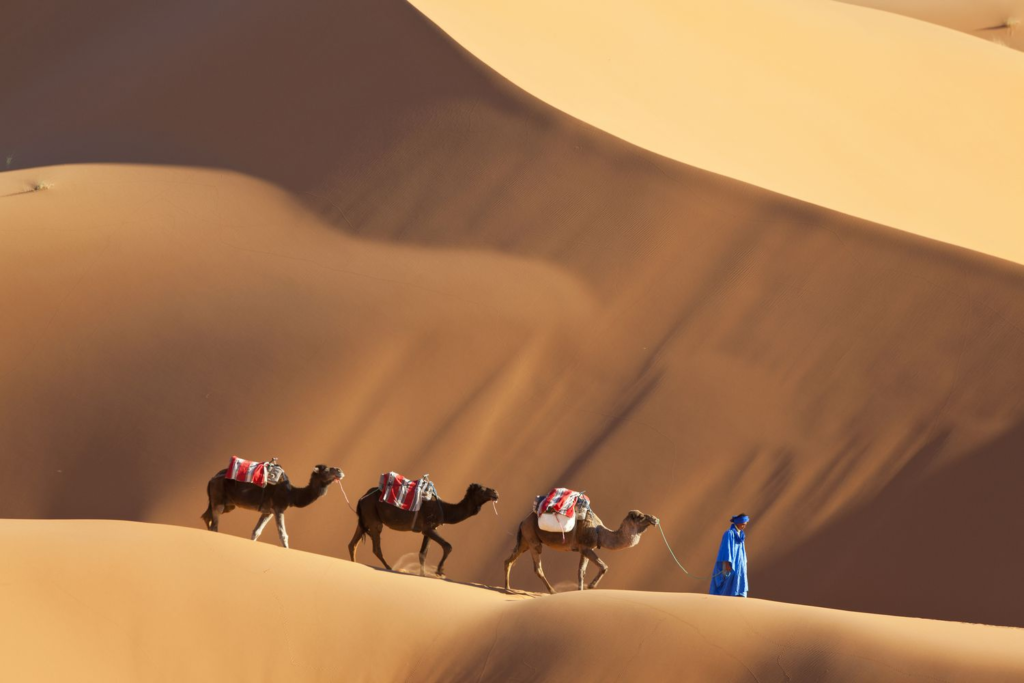
Merzouga is a small village located near the Sahara Desert, famous for its stunning sand dunes known as Erg Chebbi. Visitors can embark on camel treks, experience traditional Berber hospitality in desert camps, and witness breathtaking sunrises and sunsets over the dunes.
The area is also known for its unique ecosystems, including oases and salt flats. Adventurers can engage in activities such as sandboarding and quad biking on the dunes.
The night sky in Merzouga offers a mesmerizing view of stars, making it a perfect spot for stargazing. The traditional music of the Berber people, often performed around the campfire, adds to the magical experience of the Sahara.
6. Essaouira

Essaouira is a charming coastal town known for its historic medina, UNESCO World Heritage status, and vibrant arts scene. The town is famous for its ramparts, fresh seafood, and annual festivals, such as the Gnaoua World Music Festival. Visitors can explore the bustling harbor, stroll along the beach, and indulge in local cuisine.
The medina of Essaouira is characterized by its narrow streets and whitewashed buildings adorned with blue accents. The Skala de la Ville, a historic sea bastion, offers stunning views of the Atlantic Ocean and the surrounding coastline.
Essaouira is also known for its thriving arts scene, with numerous galleries showcasing local artists’ work. The city is a hub for windsurfing and kitesurfing, attracting adventure seekers from around the world.
7. Atlas Mountains
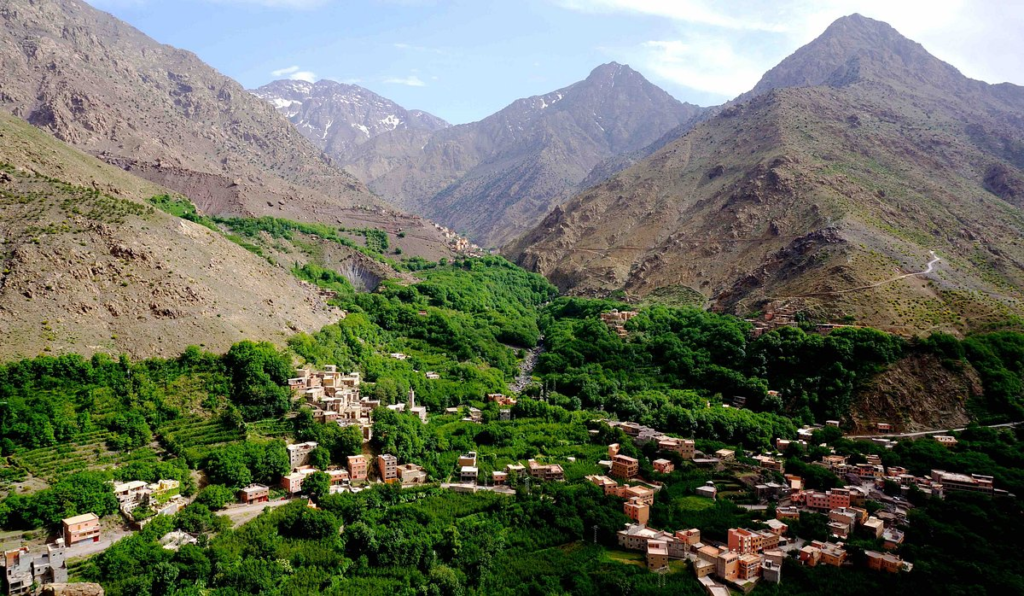
The Atlas Mountains are a stunning mountain range that offers breathtaking views and opportunities for outdoor adventures. Hiking, trekking, and skiing are popular activities in the region. The charming Berber villages nestled in the mountains provide a glimpse into traditional Moroccan life and culture.
The Toubkal National Park, home to the highest peak in North Africa, Mount Toubkal, is a popular destination for trekkers and climbers. The park features diverse flora and fauna, making it an ideal spot for nature enthusiasts.
Visitors can also engage in cultural experiences, such as staying in traditional Berber guesthouses and participating in local cooking classes. The warm hospitality of the Berber people adds to the charm of the Atlas Mountains.
8. Ouarzazate
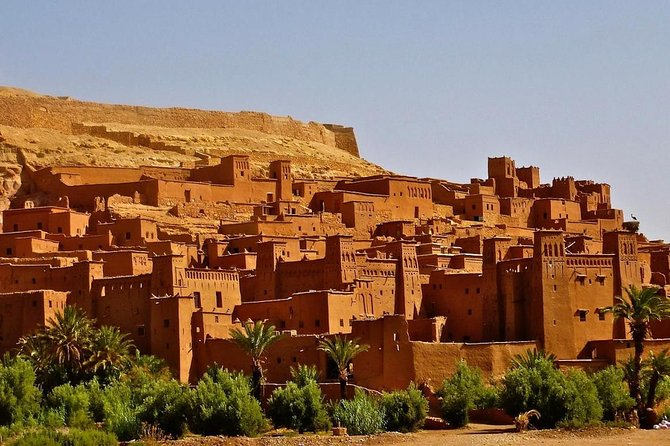
Ouarzazate, often referred to as the “Gateway to the Sahara,” is known for its stunning landscapes and film studios. The town is home to the famous Aït Benhaddou, a UNESCO World Heritage site that has served as a backdrop for numerous films, including “Gladiator” and “Game of Thrones.”
Visitors can explore the ancient kasbahs, which showcase traditional Moroccan architecture. The Taourirt Kasbah in Ouarzazate is a well-preserved example of this style, offering insights into the region’s history.
Ouarzazate is also a hub for filmmakers, with several studios offering tours and exhibitions. The Atlas Film Studios is one of the largest film studios in the world, showcasing the film industry’s impact on the region.
9. Agadir
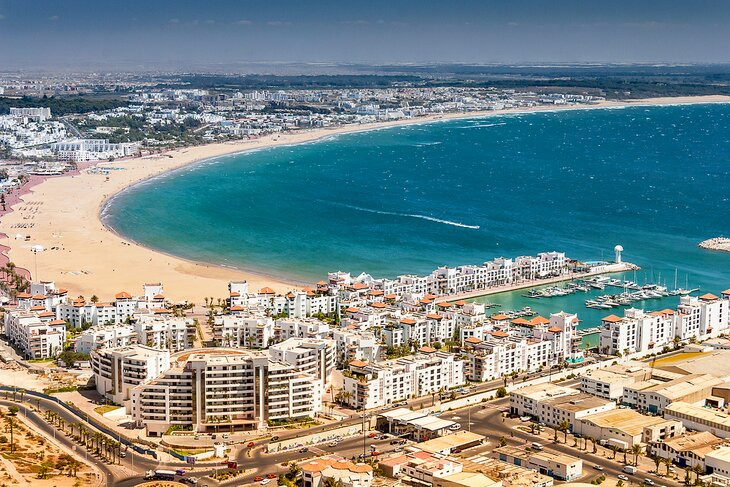
Agadir is a popular beach destination known for its sunny climate, sandy beaches, and luxury resorts. The city offers a range of water activities, including surfing, sailing, and beach lounging. The promenade along the beach is lined with cafes and restaurants, making it a great place to relax and enjoy the ocean views.
Agadir is also known for its vibrant nightlife, with numerous clubs and bars offering entertainment for locals and tourists. The Agadir Oufella fortress, overlooking the city, provides panoramic views of the coastline and is a great spot for sunset watching.
The local cuisine is a highlight of Agadir, with fresh seafood and traditional Moroccan dishes available at beachfront restaurants. The city’s blend of relaxation and adventure makes it an ideal destination for travelers seeking a beach getaway.
10. Tangier
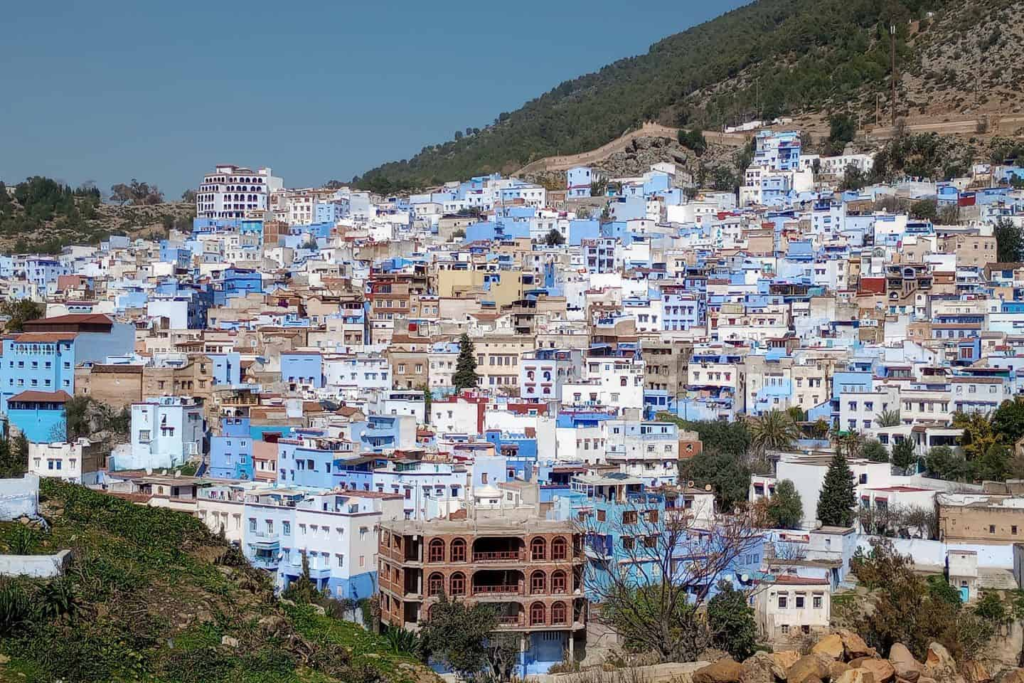
Tangier, located at the northern tip of Morocco, is a city with a rich history and cultural significance. The city has been influenced by various civilizations, including the Phoenicians, Romans, and Portuguese. Visitors can explore the historic medina, visit the Kasbah Museum, and enjoy stunning views of the Strait of Gibraltar.
The Café de Paris is a popular spot for locals and tourists alike, offering a glimpse into the city’s vibrant café culture. Tangier’s beaches are also a major draw, with opportunities for swimming, sunbathing, and water sports.
The city’s proximity to Europe makes it a popular gateway for travelers looking to explore both Morocco and Spain. The blend of cultures and influences in Tangier creates a unique atmosphere that captivates visitors.
Culture
Morocco is a melting pot of cultures, with a rich heritage shaped by its Arab, Berber, and French influences. The country’s culture is characterized by vibrant traditions, arts, and music that reflect its diverse history.
Arabic and Berber are the official languages of Morocco, with French widely spoken in urban areas and used in business and government. The richness of Moroccan culture is evident in its traditional crafts, including pottery, weaving, and metalwork. The intricate designs and vibrant colors found in Moroccan handicrafts are a testament to the country’s artistic talent.
Traditional Moroccan music is a vital part of the culture, with genres ranging from Gnawa to Chaabi. Music festivals, such as the Marrakech Popular Arts Festival, celebrate this rich musical heritage and showcase local talent.
Moroccan cuisine is also an integral part of the culture, known for its bold flavors and aromatic spices. Dishes like tagine and couscous are staples of Moroccan dining, often served during family gatherings and celebrations. The tradition of sharing meals reflects the strong sense of community and hospitality found in Moroccan culture.
Festivals
Morocco is home to a variety of festivals that celebrate its rich cultural heritage. These festivals showcase traditional music, dance, art, and gastronomy, attracting locals and tourists alike.
One of the most famous festivals is the Marrakech International Film Festival, which highlights both Moroccan and international cinema. The festival draws filmmakers and actors from around the world, promoting cultural exchange through the art of film.
Another notable event is the Fes Festival of World Sacred Music, which celebrates spiritual music from different cultures. The festival aims to promote tolerance and understanding through the universal language of music, featuring performances from renowned artists.
The Gnaoua World Music Festival in Essaouira is a celebration of Gnaoua music, an important part of Moroccan culture. The festival attracts musicians and visitors from around the globe, creating a vibrant atmosphere filled with music and dance.
Economy
Morocco’s economy is diverse, with key sectors including agriculture, mining, and tourism. The country’s agricultural sector plays a vital role, with crops such as olives, citrus fruits, and cereals contributing significantly to the economy.
Mining is another essential industry, with Morocco being one of the world’s leading producers of phosphates. The country also has significant reserves of minerals like lead, zinc, and copper, contributing to its economic growth.
Tourism is a major driver of Morocco’s economy, attracting millions of visitors each year. The country’s rich cultural heritage, stunning landscapes, and vibrant cities make it a popular destination for travelers. The government has implemented various initiatives to promote sustainable tourism and preserve the country’s cultural and natural resources.
Cuisine
Moroccan cuisine is renowned for its bold flavors and aromatic spices. The country’s diverse culinary heritage reflects its rich history and cultural influences. Traditional dishes such as tagine, couscous, and pastilla are staples of Moroccan dining.
Tagine, a slow-cooked stew named after the earthenware pot in which it is prepared, is a must-try dish. It can be made with various ingredients, including chicken, lamb, and vegetables, seasoned with a blend of spices like saffron, cumin, and cinnamon.
Couscous, made from steamed semolina, is often served as a side dish or base for stews. It is a staple food in Moroccan households and is traditionally served during family gatherings and celebrations.
Moroccan mint tea, known as “Moroccan whiskey,” is a symbol of hospitality in the country. The sweet, refreshing beverage is made with green tea, mint leaves, and sugar, served in decorative glasses. It is a common practice to offer mint tea to guests as a sign of welcome and friendship.
Top Eight Most Famous Food of Morocco

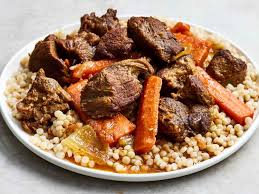
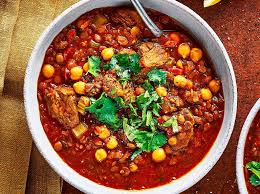
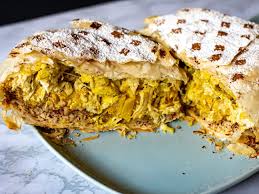
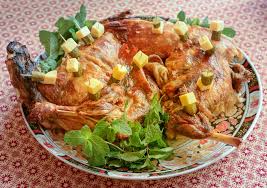
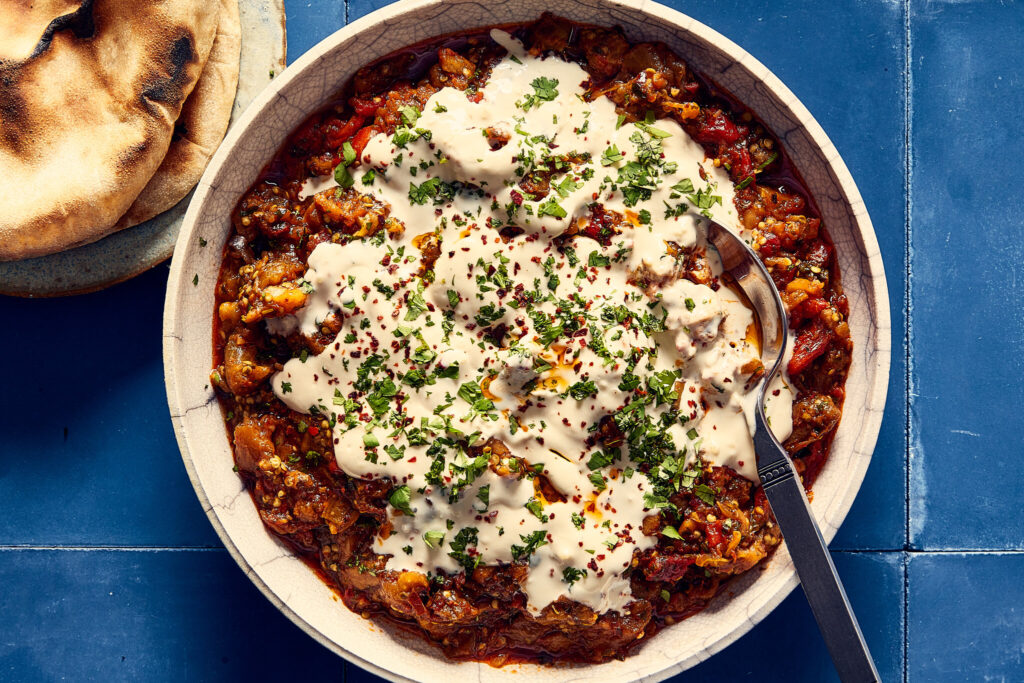
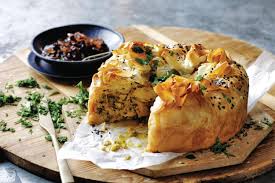

Interesting Facts
- Morocco has the largest desert in the world, the Sahara Desert.
- The country is home to the world’s oldest university, Al Quaraouiyine.
- Marrakech’s medina is a UNESCO World Heritage site.
- The Hassan II Mosque in Casablanca is one of the tallest mosques in the world.
- Morocco produces over 50% of the world’s supply of phosphates.
- The country has a diverse climate, ranging from Mediterranean to desert.
- Moroccan cuisine is famous for its use of spices like saffron and cumin.
- The Blue City, Chefchaouen, is known for its stunning blue-washed buildings.
- Morocco has a vibrant arts scene, with numerous galleries and festivals.
- The country has a rich history of Berber, Arab, and European influences.
Conclusion
Morocco is a country that captivates the senses with its rich history, diverse culture, and stunning landscapes. From the bustling streets of Marrakech to the serene dunes of the Sahara, the country offers a unique blend of experiences for travelers. With its warm hospitality, flavorful cuisine, and vibrant festivals, Morocco is a destination that promises unforgettable memories and adventures.
let’s enjoy few years on earth with peace and happiness….



